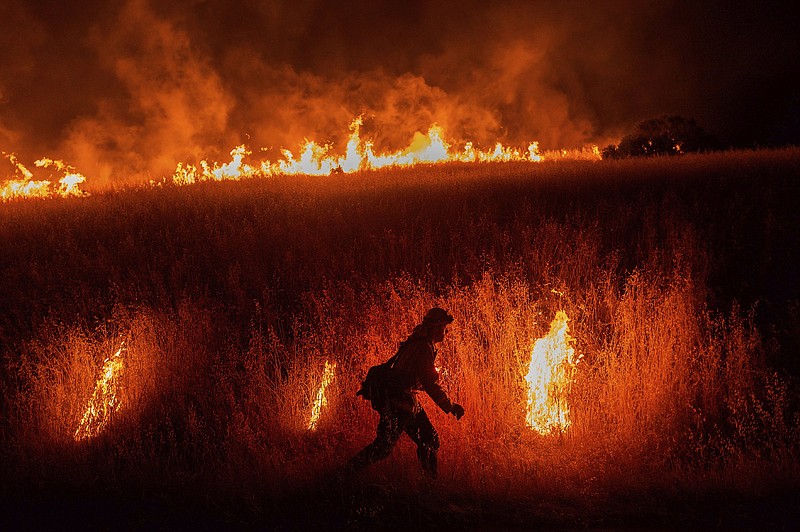California and the West are falling deeper into drought and, with summer approaching, that portends another severe fire season.
As a disappointing wet season comes to a close and hope for spring rain fades, conditions are worse now than they were at this time last year, with exceptional and extreme drought now found throughout the region.
In California, that doesn't bode well, given that last year's more moderate rainfall deficits, combined with extreme heat waves, ushered in a record-setting fire year. It brought five of the six largest fires in modern state history, 10,488 destroyed structures and 33 fatalities. Some 4.2 million acres were torched.
More frequent drought, hotter summers and warmer and drier autumns, tied to climate change, are stacking the deck for large and destructive fires during the heart of the fire season. And this year, a lack of rain in spring could mean fires arrive early in some areas.
After a devastating 2020 fire season and a dry autumn, this winter offered a chance to reverse course on mounting rainfall deficits. But despite a significant late-January storm, the 2021 winter and spring months have failed to deliver even normal precipitation, and much of April is forecast to be very dry. In fact, the current water year is now tied for the third-driest on record.
"As California got further into the wet season, it became clear that the number of major storms, such as atmospheric rivers, needed to ameliorate the drought were not coming, and drought conditions and impacts across sectors intensified and expanded," Amanda Sheffield, an expert with the National Integrated Drought Information System, said in an email.
For the past two wet seasons, a persistent ridge of high pressure in the central and eastern Pacific has diverted most storms out of the state. In Northern California, many of the wettest, forested regions have missed more than 20 inches of precipitation in that period.
"The two-year precipitation deficits in the mountains are really going to cause plants to struggle, and I think that's what we're seeing," said Craig Clements, a professor and director of the Wildfire Interdisciplinary Research Center at San Jose State University.
Last week in the Santa Cruz mountains, Clements sampled plants in a field of chaparral -- flammable shrubs found throughout the state. They showed record-low moisture values for April and no new growth where they should be blooming and thriving.
A similar situation could develop in higher-elevation forests.
While he hopes that growth might simply be delayed and recover with additional spring rain, "I think we are going to see dying plants and a lot of dead fuel accumulating in chaparral across the state," he said.
A similar situation could develop in higher-elevation forests in the Sierra and Cascades.
Statewide mountain snowpack, currently at less than 50% of normal, is expected to melt off early, leaving Sierra forests prone to burn earlier and hotter.
Even with the very dry spring so far, grasses are still green in many areas, preventing fires from spreading quickly. But once those dry out, or "cure," the state could be in a full-blown fire season.
"How early the fire season starts will depend on how this year's green-up goes, and how quickly the vegetation dries due to the very low soil moisture and weather conditions," Sheffield said.
Rain, fog and cooler weather would slow this drying process, while heat and wind would accelerate it.
"When we have a dry winter and a fairly dry spring, all elevations become open for business much sooner," Brent Wachter, a fire meteorologist with the U.S. Forest Service in Redding, Calif., said in an email.
And deepening drought and low soil moisture mean that flammable elements -- from ground cover to the treetops -- can be available to burn at the same time. "Thus, more potential for an ignition in the 'wrong' area and 'wrong time' resulting in rapid fire spread and increased intensity," he wrote.

